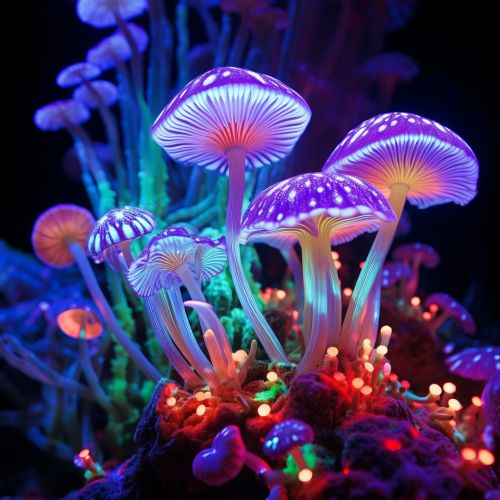Mechanisms of Ultraviolet Radiation Resistance in Microorganisms
Introduction
Ultraviolet (UV) radiation is a form of electromagnetic radiation that comes from the sun and can have harmful effects on living organisms. However, some microorganisms have developed mechanisms to resist the damaging effects of UV radiation. These mechanisms are of great interest to scientists in the fields of microbiology, genetics, and astrobiology, as they may provide insights into how life could survive in extreme environments, both on Earth and on other planets.
UV Radiation and its Effects on Microorganisms
UV radiation is divided into three types based on wavelength: UVA (320-400 nm), UVB (280-320 nm), and UVC (200-280 nm). Of these, UVC is the most damaging to microorganisms, as it can directly damage their DNA and proteins. This can lead to mutations, impaired cellular functions, and even cell death. Despite this, some microorganisms have evolved to survive and even thrive in environments with high levels of UV radiation.


Mechanisms of UV Radiation Resistance
Microorganisms have developed several mechanisms to resist the harmful effects of UV radiation. These include DNA repair mechanisms, protective pigments, and other physiological adaptations.
DNA Repair Mechanisms
One of the primary ways that microorganisms resist UV radiation is through DNA repair mechanisms. These mechanisms can repair the damage caused by UV radiation to the DNA molecule, allowing the microorganism to continue functioning normally. There are two main types of DNA repair mechanisms: nucleotide excision repair (NER) and photoreactivation.
Nucleotide Excision Repair (NER)
NER is a mechanism that removes damaged sections of DNA and replaces them with new, undamaged DNA. This process involves several steps and a number of different proteins, including the UvrABC endonuclease complex and DNA polymerase. NER is a versatile repair mechanism, as it can repair a wide range of DNA damage, including the pyrimidine dimers that are commonly caused by UV radiation.
Photoreactivation
Photoreactivation is a repair mechanism that uses light to reverse the damage caused by UV radiation. This process is carried out by an enzyme called photolyase, which absorbs light and uses its energy to break the bonds between the damaged DNA bases. Photoreactivation is a very efficient repair mechanism, but it requires light to function, making it less effective in dark environments.
Protective Pigments
Some microorganisms produce pigments that can absorb UV radiation, protecting the organism from its harmful effects. These pigments can be found in the cell wall or membrane, or they can be secreted into the environment. Examples of protective pigments include melanin, carotenoids, and mycosporines. These pigments not only absorb UV radiation, but they can also neutralize reactive oxygen species (ROS), which are another harmful byproduct of UV radiation.
Physiological Adaptations
In addition to DNA repair mechanisms and protective pigments, microorganisms can also have physiological adaptations that help them resist UV radiation. These can include changes in cell structure, changes in metabolism, and the production of protective proteins. For example, some microorganisms can form spores or cysts that are highly resistant to UV radiation. Others can alter their metabolism to reduce the production of ROS, or they can produce proteins that stabilize their DNA and protect it from damage.
Implications for Astrobiology
The ability of microorganisms to resist UV radiation has important implications for astrobiology, the study of life in the universe. These mechanisms could potentially allow life to survive on other planets with high levels of UV radiation, such as Mars. Furthermore, the study of UV radiation resistance in microorganisms can provide insights into the limits of life and the conditions necessary for life to exist.
